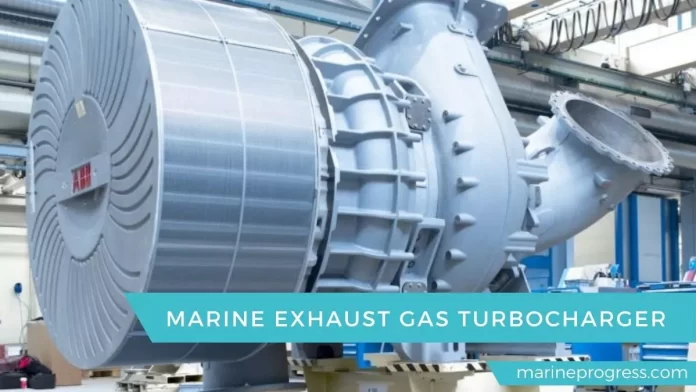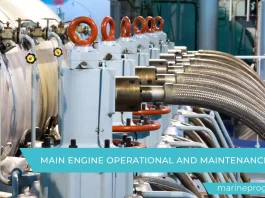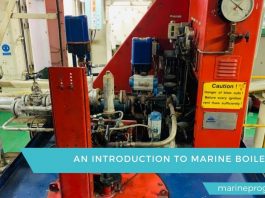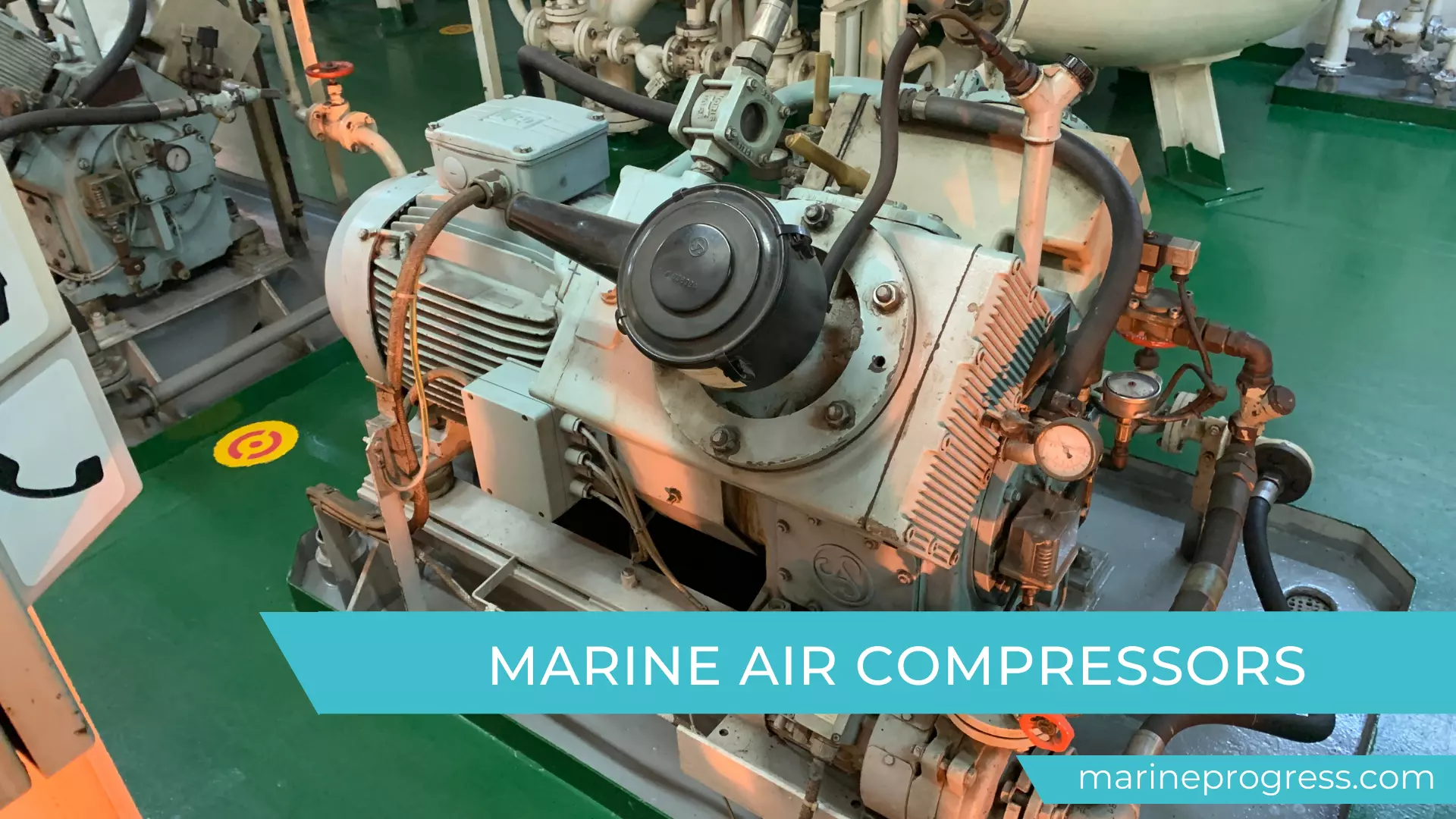The turbocharger consists of a single-stage impulse turbine connected to a centrifugal impeller via a shaft.
The turbine works by the engine exhaust gas, which enters via the gas inlet casing. The gas expands through a nozzle ring where the pressure energy of the gas converts to kinetic energy. This high-velocity gas is directed onto the turbine blades where it drives the turbine wheel, and thus the compressor at high speed (10-15000 rpm).
The exhaust gas then passes through the outlet casing to the exhaust uptake.
On the airside, the air goes in through litters and enters the compressor wheel axially where it accelerates to high velocity.
The air exits the impeller radially and passes through a diffuser. From that, some of the kinetic energy converts to pressure energy. The air passes to the volute casing where a further energy Conversion takes place. The air gets cool before passing to the engine inlet manifold or scavenge air receiver.
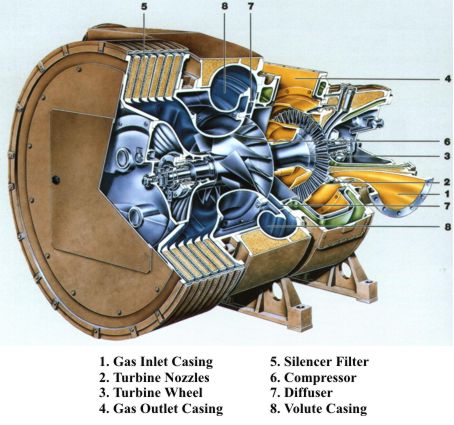
Causes of turbocharger surging
- Scavenge space fire
- Exhaust trunking fire
- Suddenly load change by the heavy sea
- Poor power balance
- Faulty turbine nozzle, blade, or diffuser
- Individual cylinder misfire
- Chocked scavenge ports
- Governor shut the fuel off almost instantaneously
Purpose Of Nozzel Ring
- Expand the exhaust gas.
- Direct exhaust gas to turbine blade.
- convert the pressure energy of gas to kinetic energy giving a high velocity.
The function of Labyrinth Seal
Two labyrinth-type seals are fitted to the shaft, one between the thrust bearing and air compressor and the other between turbine and bearing. They are sealed with air under pressure from the compressor discharge through internal passages and restriction plugs. Air from the glands then passes to the atmosphere or assists cooling of the turbine disc. The seals prevent possible oil leakage into the turbine or compressor, or exhaust gas into the corresponding bearing oil.
